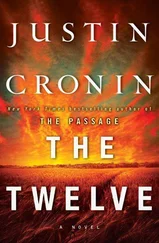Mary reached under the table and found O’Neil’s hand. “I’m sorry.”
“It’s not really so bad to be here,” O’Neil said. “I only wish the food wasn’t so weird. I wanted you to have a nice meal.”
They managed to eat a respectable amount of salad before the entrée arrived: braised medallions of venison with cranberries and lemongrass, served on a bed of buckwheat couscous. After the pansies it was surprisingly good, and they ate hungrily, even O’Neil. By this time it was after ten and most of the other tables were empty. O’Neil began to talk freely about his memories of the house and the town, as he had not done since they’d arrived the day before. The stories he told were happy, and Mary understood then that part of his pleasure was his invisibility-it had been that way for her-and he would neither tell the owner who he was nor try to go upstairs. And yet she knew that was what he truly wanted: a few moments alone, in his old room.
They were the last to leave the restaurant. Outside, the winter sky was hung with a dense tapestry of stars. She waited until O’Neil was buckled in before she announced her intentions to return to the restaurant to use the bathroom.
O’Neil looked at her with a puzzled expression. How, she wondered, could he possibly fail to know what she was about to do? “The motel is only five minutes.”
“I don’t think I can wait,” she said, and got out of the car.
She found the dining room empty, as she had hoped. Their table had already been cleared and laid out with clean linen and silverware for the next night. From the kitchen she heard the sound of pots clattering in the sink and running water, and country music playing on a radio. She waited a moment at the door to see if anyone had detected her return, then stepped over the velvet rope and climbed the stairs.
The hallway was dark, but as her eyes adjusted she saw five doors, all closed. There were three bedrooms, she knew-O’Neil had given her the basic layout-plus a bathroom and a linen closet. Cardboard boxes were stacked along the wall, and at the far end of the hall she saw a small table with a telephone on it. It was an old-style rotary phone; probably it had been there since O’Neil was a boy. She had already guessed that the chef and his wife lived up here. Turned around in the darkness, Mary had lost track of which door was which, but she guessed and opened the second one on the left.
The room was small and square, and a night-light glowed on the wall above a baby’s crib. Mary stepped inside. The air was warm and sweet, like clean laundry. She saw a bureau and a changing table, and a bookshelf with toys-dinosaurs and trucks, a baseball glove, the kinds of things a boy would like. What was she doing in here? And yet she could not remove herself; the urge to remain was irresistible, as if she were soaking in a bath. She stood another moment, tasting the air, then approached the crib where the little boy was sleeping.
It was then that she saw the blinking baby monitor on the bureau. Mary’s heart froze with panic, but it was too late-she had been detected. She heard footsteps running up the stairs, and then a voice, slicing through the darkness.
“What are you doing in there?”
It was the woman who had served them dinner. She pushed past Mary into the room, placing herself between Mary and the crib.
“I’m sorry,” Mary said. “I was looking for the bathroom. Nobody was downstairs.”
“I thought you left,” the woman said sternly. “It says private, you know. Private means something to most people.”
The baby had begun to fuss in its crib. The woman turned away from Mary and bent over the railings to lift him into her arms. It was then that Mary saw that it wasn’t a baby at all, but a much older child-a boy in Barney pajamas, perhaps as old as five. His eyes were closed, but his mouth, which was large and wet, twisted with his soft cries. He laid his head over her shoulder; his bare feet hung nearly to the woman’s knees and made a series of jerky movements. Mary noticed things in the room she somehow had not seen before: a tiny wheelchair parked beside the bureau, a white box with tubes and dials that looked medical, a shiny chrome stand for an IV. Even the crib was different-much larger, like a raised bed with bars.
The woman smoothed the child’s hair. “Mummy’s here,” she cooed. “No bad dreams, no bad dreams.”
Mary stood in the doorway. “I truly am sorry,” she said again. “I didn’t mean to wake him.”
“He’s deaf.” The woman looked at Mary then, fixing her with a firm gaze. “It’s not even words he hears, just a vibration.”
Outside, O’Neil was waiting in the Toyota, the engine idling. He was gripping the wheel tightly, as if he couldn’t wait to drive away.
“All set,” she said.
He looked at her as if he was about to speak, then put the car in gear. “You’ll have to tell me about that sometime,” O’Neil said.
In the early morning, before O’Neil was awake, Mary rose from bed, seized by a turbulent nausea, and went to the bathroom to vomit. She managed to do this quietly, then rinsed her mouth out and returned to bed. But when the two of them awoke later, she found that the feeling had not passed.
“It’s that goddamn restaurant,” O’Neil fumed. “Pansy salad. And that awful soup. What the hell was that all about?”
They had planned to visit the cemetery that morning, but agreed this was now impossible, and O’Neil left the motel to find muffins and tea for Mary, to put something on her stomach before they attempted the drive back to Philadelphia. At the window Mary watched the car pull away, then put on her coat and walked into town. She had seen the clinic the day before, near the gallery where they had looked at pots; the sign had said it was open for Sunday walk-ins from nine to twelve o’clock.
The door was open and the lights were on, but the waiting room was empty. Mary sat down and thumbed through a needlework magazine, and a few minutes later a woman appeared, wearing a white coat and stethoscope.
“Ah,” she said, seeing Mary. “I didn’t know anyone was here.”
“Are you the doctor?”
The woman, who had short gray hair and a handsome heart-shaped face, held up the disk of her stethoscope and looked at it in mock surprise. “Now, who put this stethoscope on me?”
The doctor led Mary into an examining room, where Mary told her about the pansies and the soup while the doctor took her temperature and blood pressure and asked her about the pain. She eased Mary back on the paper-lined table and pressed her bare stomach here and there. Her fingers were pale and slender, yet eased into Mary’s flesh with surprising force.
The doctor stepped back. “Well, I don’t think it’s food poisoning.”
“The meal was strange but I’d have to agree.”
“I’ve eaten there. The duck is really what’s special.” The doctor furrowed her brow at Mary. “How late are you?”
“Ten days, give or take.”
“Have you ever been pregnant before?”
“Not in many years,” Mary said. “Has it changed?”
From a cabinet of supplies the doctor removed a square pink box with a picture of a daisy and handed it to Mary. Inside were a small specimen cup and a plastic wand, like an undersized thermometer, wrapped in cellophane.
Mary held up her bare wrist. “I don’t have a watch.”
The doctor unclasped her own-a Timex, with three hearts forming the first three links of the band on either side of the face-and showed Mary to the rest room. Mary squatted over the toilet and held the cup between her legs until she had filled it, and placed it on the toilet tank. The instructions on the box said the test would take three minutes, but the instant Mary dipped the wand into the cup, a turquoise ribbon shot up the blotter paper and filled the little window, resolving into a tiny cross. She counted off three minutes with the watch, waiting to see if there was some mistake and the blue cross would be retracted. When it wasn’t, she dumped the cup into the toilet, wrapped the wand in tissue paper to show O’Neil, and returned to the office.
Читать дальше












